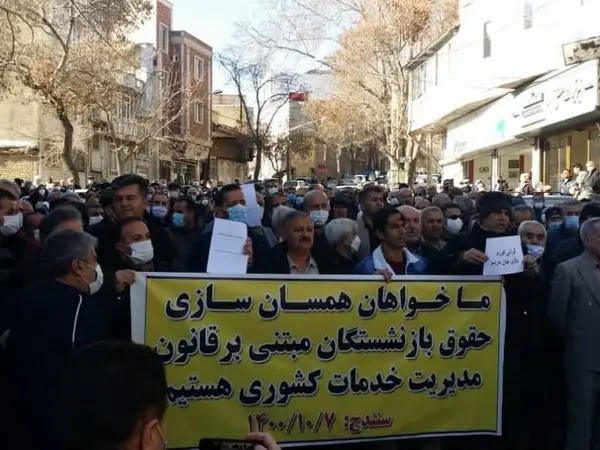Prices in Iran have risen five to ten-fold since 2018, impoverishing tens of millions and widening income gaps, the head of construction workers' union says.
Cumulative inflation in the construction industry has been 700 percent, while wages for workers has maybe doubled, Akbar Shokat the national chairman of construction workers unions told the Iranian Labour News Agency (ILNA) this week.
Shokat said while each square meter of building construction cost 10 million rials three years ago, now it costs 70-80 million. The same applies to food workers have to buy. One kilo of red meat cost 250 rials in 2018 while now the price has reached 1.6 million rials.
The examples mentioned by the union leader clearly show the impact of ‘maximum pressure’ sanctions imposed by the United States after former President Donald Trump withdrew from the Iran nuclear accord in May 2018. It also shows that inflationary pressures picked up as time passed, averaging above 40 percent in 2021.
While with US sanctions Iran’s currency nosedived in 2018, it took months for annual inflation to increase to above 30 and then 40 percent. The currency, rial dropped from 33,000 to the dollar to the current low of 260,000, or almost eightfold.
The claim about people with capital getting richer is based on the reality that business owners raise prices as the value of Iranian currency falls and maintain a higher margin of incomes than wage earners whose salaries change once a year by a government decision on minimum wage. Salary increases are always far less than inflation.
With the most recent minimum wage hike, an average worker will take home around $200 a month, while labor groups say the minimum needed for a family of 3.3 persons is $450 a month.
People owning real estate, profitable businesses or foreign currencies are by-and-large immune from the perils of a falling currency and inflation, because the value of their capital remains mostly intact. For example, real estate prices calculated in US dollars, have stayed the same since 2018, while salaries have dropped.
Jalal Mirzaee, a former member of parliament, told ILNA on Thursday that without the removal of US sanctions the economy cannot improve, especially that President Ebrahim Raisi in many cases has appointed top managers who are not experts in their fields.
Raisi, for example, has appointed former Revolutionary Guard commander Mohsen Rezaei as one of his top economic aides, but he has never managed a large bureaucracy or a private sector company.
“The root cause of many economic difficulties is US sanctions,” Mirzaee said, but added that this does not mean successive governments have not mismanaged the economy, which is largely state-owned and run by the government. If sanctions are lifted, it would be easier to address Iran’s economic problems, but that would depend on effective management by the government, Mirzaee said, which is doubtful in the current administration.
Hossein Raghfar, a respected economist, told Etemed Online this week that the country’s foreign currency revenues have been mishandled and the rial has fallen so much that economic stability is questionable. The result is capital flight, with most investors shifting their businesses to neighboring countries.
Raghfar criticized the established economic order, saying that the Islamic Republic has created an “oligarchy that benefits most from foreign currency revenues” gained by exporting crude oil and other national resources. He argued that in the first instance, political insiders and the military should exit the business world and allow a real private sector to emerge. Raghfar said, “If there is no private sector, the economy cannot move forward.”
